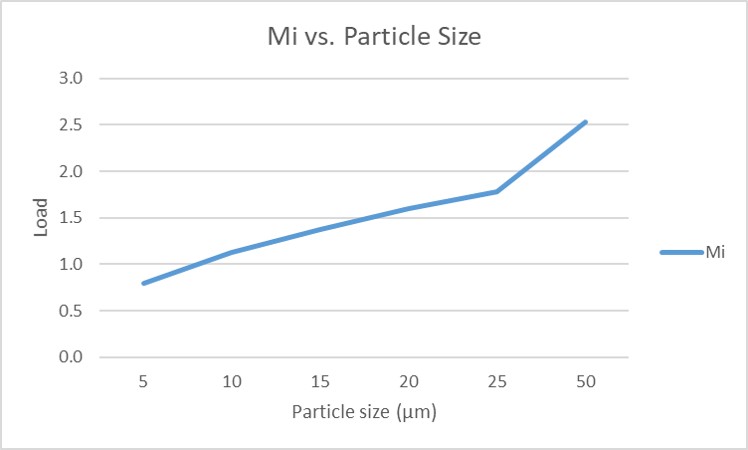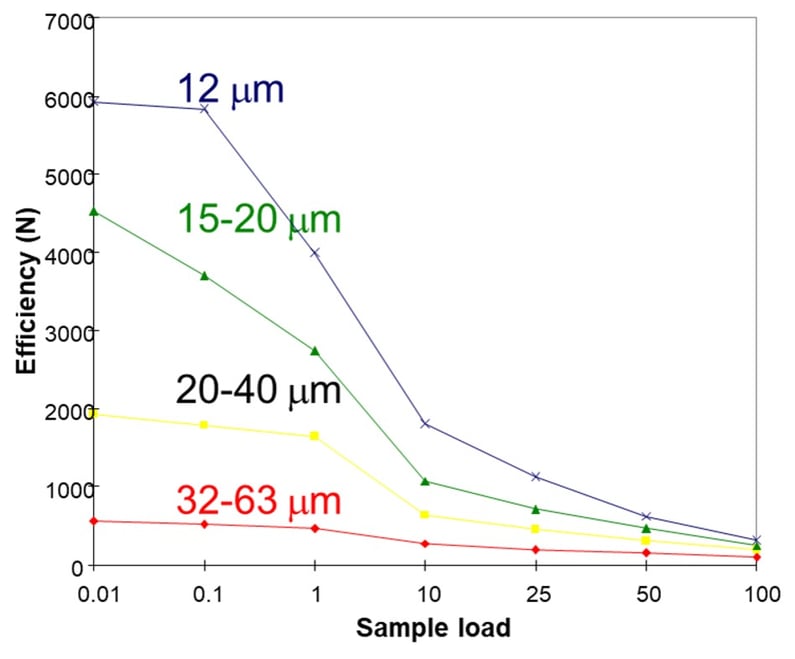Plate count is a theoretical number describing the separation efficiency of a chromatography column. In short, it is a measure an eluting compound's bandwidth at the time it elutes from a column, Equation 1.
N = 16 (tr/Wb)2 Equation 1
Where: N is the column plate count
tr is the compound’s peak apex time
Wb is the peak width at baseline
This value, in tandem with the column’s selectivity (a measure of separation) for a pair of compounds, provides chemists with a resolution value. So, in theory, as resolution increases, so does loading capacity and/or fraction purity.
For analytical chemists, plate count, and therefore resolution, is king. The better the resolution, the better the detection sensitivity and quantitation.
In preparative chromatography, plate count’s role in a separation of compounds is diminished. The reason for this is that higher efficiency columns, typically those packed with smaller diameter media, overload more quickly than columns packed with larger particles.
Equation 2 shows that loading capacity (Mi) is inversely proportional to the column’s plate count (n) so that as column efficiency increases, loading capacity decreases. I know, this seems to counter what was stated earlier, and it is.
Mi = Am*(1.9*r2*L)*(1+k)/n1/2[1] Equation 2
Where: Mi is the mass injected
Am is a constant
r is the column radius
L is the column bed length
k is the capacity factor (compound retention value)
n is the column plate count
Figure 1 graphically shows this relationship with a plot of predicted loading capacity vs. particle size. As mentioned earlier, smaller particles generate higher plate counts.

Figure 1. Impact of particle size on loading capacity shows that smaller particles (higher efficiency) columns have reduced benefit in a preparative mode.
This phenomenon is one of the reasons preparative chromatography has historically been performed using larger particles, the other reason being lower pressure.
That being said, there is a role for plate count in flash chromatography. Since most of us use flash chromatography for intermediate purification, yield is the priority, with 80+% product purity as a secondary goal. By using slightly smaller particles, say 20 µm vs. 50 µm, the separation performance remains high, even with slightly higher loads and does not decline at the same rate as smaller particles, e.g. <20 µm, Figure 2.

Figure 2. Sample load impact on separation efficiency (plate count) shows marginal performance loss with 20-40 µm media compared to typical 32-63 µm (nominal 50 µm) media.
So what should you use to purify your crude mixture? That depends on your purification goals and the separation difficulty but certainly, a 20-40 µm media will generate a good separation at high loads.
Interested in learning more about flash chromatography? If so, please download our white paper, Successful Flash Chromatography.
[1] www.Chromatography-online.com, Preparative Chromatography - The Loading Capacity of a Column

 Organic Workflow
Organic Workflow Peptide Workflow
Peptide Workflow Scale-Up Flash Purification
Scale-Up Flash Purification  Sample Preparation
Sample Preparation Biomolecule Purification
Biomolecule Purification Oligo synthesis
Oligo synthesis Scavengers and Reagents
Scavengers and Reagents Service & Support
Service & Support Accessories & Spare parts
Accessories & Spare parts Investors
Investors Reports & News
Reports & News The Share
The Share Corporate Governance
Corporate Governance Calendar
Calendar Sustainability
Sustainability Our Offering
Our Offering Our History
Our History Our Locations
Our Locations Leadership
Leadership